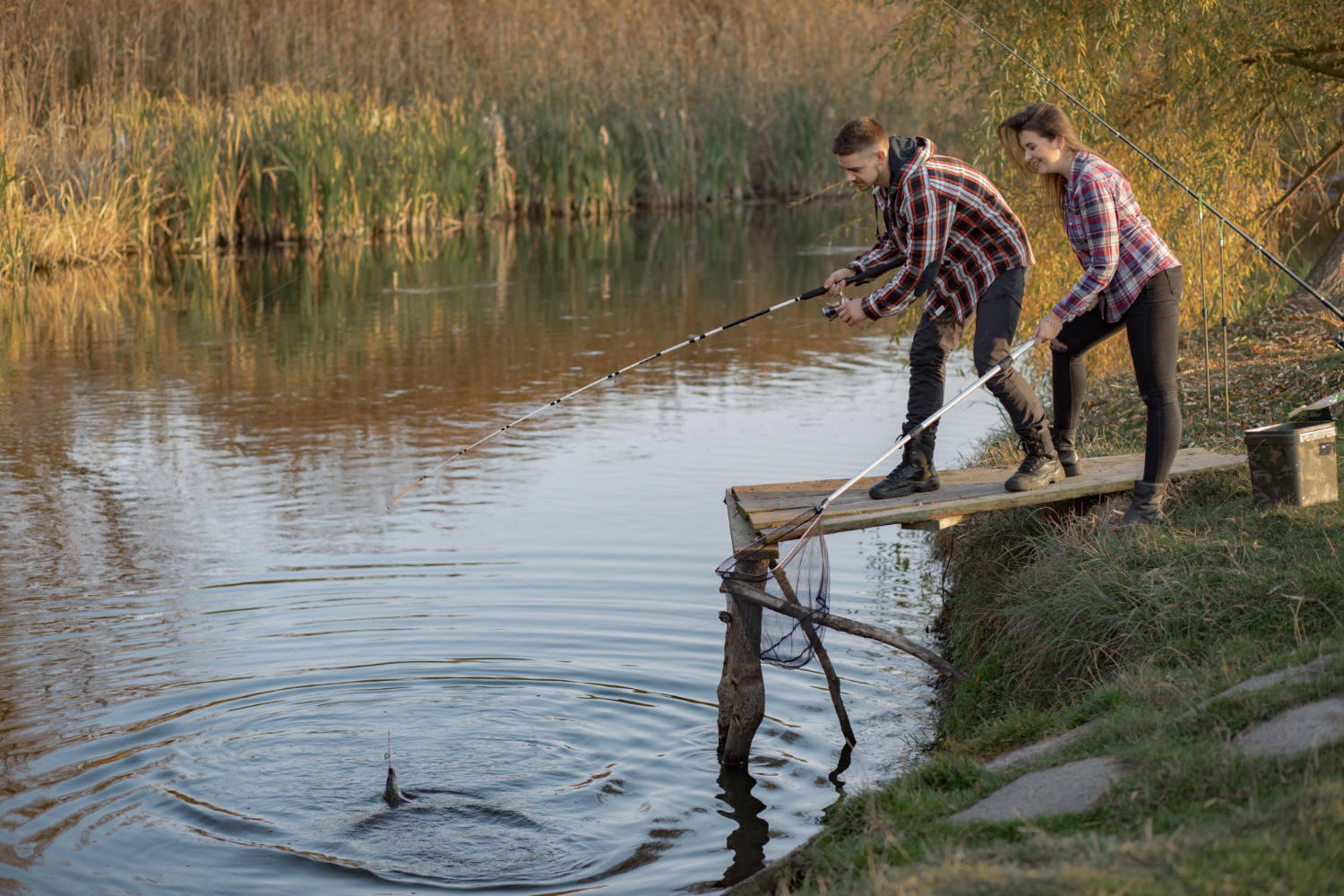
A healthy lake doesn’t just happen on its own; it requires proper management to keep fish populations thriving in a balanced ecosystem. Whether you own a private lake, pond, or fishery, understanding how to properly stock and maintain fish populations is essential for creating a sustainable environment. Today, we’ll talk about how to manage fish populations in your lake, particularly stocking and balance.
Stocking plays a major role in maintaining fish populations. In some cases, lakes may naturally lack enough of a certain species to support a balanced ecosystem, or overfishing and natural die-offs may reduce numbers. Introducing fish replenishes populations, diversifies the lake environment, and improves recreational fishing opportunities. Overstocking or stocking incompatible species can throw the ecosystem off balance.
One of the most important aspects of trusted lake management is balancing predator and prey species. Predator fish like bass, pike, or catfish help keep populations of prey species such as bluegill, minnows, or shad under control. If prey fish numbers get too high, food resources become scarce, leading to smaller, less healthy fish. On the other hand, too many predators can wipe out forage fish populations. Stocking should always take this predator-prey relationship into account to ensure a sustainable balance.
When stocking, consider the climate, water depth, temperature, and existing fish population. Common stocking choices include:
Working with a fisheries biologist or stocking expert can help ensure you choose the right mix of species for your specific lake conditions.

While it might seem like adding more fish will improve fishing and strengthen the ecosystem, overstocking is one of the most common mistakes lake owners make. Too many fish compete for the same limited food supply, leading to stunted growth, disease, and weakened populations. A good stocking plan should consider the size of the lake, its food resources, and its existing fish population before introducing new fish.
Ongoing monitoring is critical for keeping fish populations in check. Regularly assessing water quality, vegetation growth, and fish size distributions will provide insight into whether the ecosystem is balanced. For example, if you notice large numbers of undersized bluegill, it may mean that predator populations need to be increased.
Healthy fish populations also depend on proper habitat. Adding structures like underwater brush piles, logs, or artificial fish habitats provides shelter for smaller fish and improves spawning opportunities. Maintaining good water quality through erosion control, nutrient management, and aeration systems will also help fish thrive.
Lake management is an ongoing process. A well-thought-out stocking plan should span several years, taking into account the natural reproduction cycles of fish and the carrying capacity of the lake. Many lake owners benefit from creating a multi-year management strategy with professional guidance to keep populations healthy for both ecological balance and recreational enjoyment.
Do you need professional lake management services in Georgia? Get in touch with the team at Aquatic Restoration. Whether you’re looking for a team of specialists to remove sediment from the bottom of your lake or undertake critical repairs, we are the experts to call. Aquatic Restoration is a reputable lake services company that offers lake dredging, spillway renovation, siphon installation, shoreline stabilization, and much more. With over 35 years of experience, our commitment to aquatic health is unmatched. Contact us for a consultation.
Sediment buildup is one of the biggest threats to lakes and ponds. It not only impacts water quality but also…
If you own a pond or lake, you know that proactive maintenance is an integral part of keeping the…
If you’ve ever walked outside and noticed your lake suddenly turn a murky shade of green, you’re not alone. Many…
Lakes are vital ecosystems that support wildlife, protect water quality, and enhance the quality of life for surrounding communities. Whether…
If you’re reading this, there’s a good chance you’re sick and tired of dealing with aquatic weeds that never…